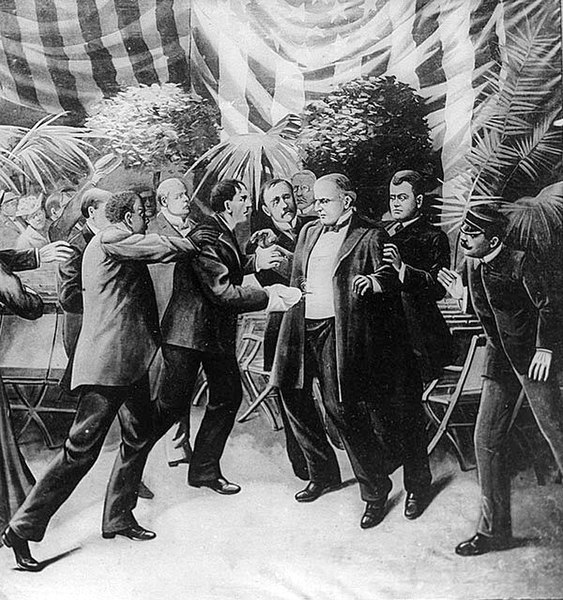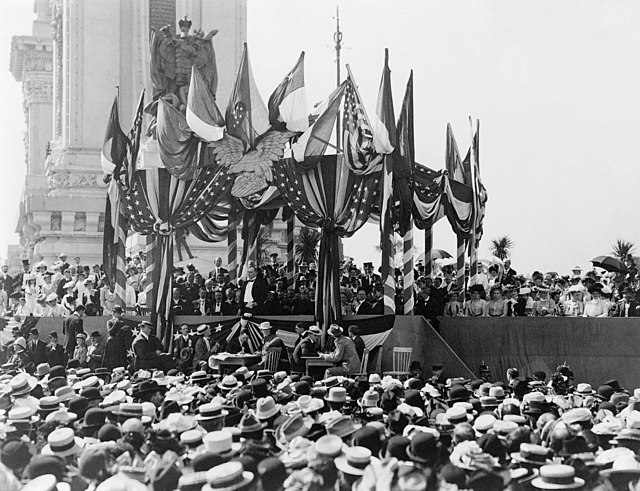Assassination of William McKinley
William McKinley, the 25th president of the United States, was shot on the grounds of the Pan-American Exposition in the Temple of Music in Buffalo, New York, on September 6, 1901, six months into his second term. He was shaking hands with the public when an anarchist, Leon Czolgosz, shot him twice in the abdomen. McKinley died on September 14 of gangrene caused by the wounds. He was the third American president to be assassinated, following Abraham Lincoln in 1865 and James A. Garfield in 1881.
Leon Czolgosz shoots President McKinley with a revolver concealed under a cloth rag on September 6, 1901, depicted in a 1905 drawing
Leon Czolgosz, McKinley's assassin
William McKinley (to the left of center, with white shirtfront) delivers his final speech.
The "last posed photograph" of President McKinley, taken in the Government Building on September 5, 1901, the day before his assassination. Left to right: Mrs. John Miller Horton, Chairwoman of the Entertainment Committee of the Woman's Board of Managers; John G. Milburn; Manuel de Azpíroz, the Mexican Ambassador; the President; George B. Cortelyou, the President's secretary; Col. John H. Bingham of the Government Board.
William McKinley was an American politician who served as the 25th president of the United States from 1897 until his assassination in 1901. A member of the Republican Party, he led a realignment that made Republicans largely dominant in the industrial states and nationwide for decades. He presided over victory in the Spanish–American War of 1898; gained control of Hawaii, Puerto Rico, the Philippines and Cuba; restored prosperity after a deep depression; rejected the inflationary monetary policy of free silver, keeping the nation on the gold standard; and raised protective tariffs.
McKinley c. 1900
Rutherford B. Hayes was McKinley's mentor during and after the Civil War.
Ida Saxton McKinley
Katherine McKinley








